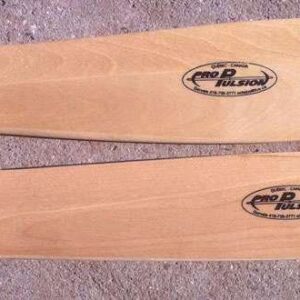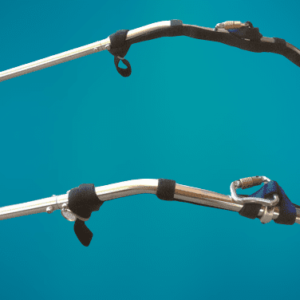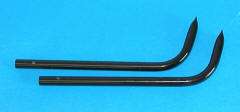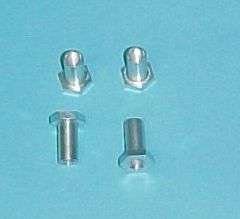Description
Paramotor Top 80 Crank Shaft M14 – Precision, Performance, and Reliability for Every Pilot
When it comes to the heart of your paramotor engine, no component plays a more pivotal role than the Paramotor Top 80 Crank Shaft M14. Engineered for precision, durability, and maximum performance, this crankshaft is essential for pilots seeking smooth operation, dependable power delivery, and long-lasting reliability. Whether you are a seasoned pilot or new to paramotoring, understanding the design, benefits, and installation of the M14 crankshaft can elevate your flying experience significantly.
Design Excellence and Material Quality
Every detail of the Paramotor Top 80 Crank Shaft M14 reflects meticulous engineering. Crafted from high-grade steel alloys, it ensures structural integrity under the most demanding flying conditions. The M14 variant features optimized balancing, which reduces vibration and enhances engine longevity.
-
High-strength steel construction for durability
-
Precision-machined journals to ensure smooth rotation
-
Optimized counterweights to reduce vibrations and improve balance
-
Corrosion-resistant finish for longevity in diverse weather conditions
By investing in quality materials and precise engineering, this crankshaft guarantees reliability. Moreover, pilots benefit from increased efficiency, smoother throttle response, and consistent power delivery.
Performance Benefits: Maximizing Engine Efficiency
The Paramotor Top 80 Crank Shaft M14 is not just a mechanical component; it is a performance enhancer. Its design minimizes energy loss and maximizes torque transmission, ensuring that your paramotor delivers consistent thrust during flight.
-
Enhanced torque output for smoother climbs and stable flight
-
Reduced vibration levels for more comfortable handling
-
Optimized rotational stability for smoother idling and acceleration
-
Longer engine lifespan due to precise load distribution
Every pilot who upgrades to the M14 crankshaft notices the difference immediately. By improving mechanical efficiency, it reduces wear on other engine components. Furthermore, it contributes to lower maintenance costs over time.
Compatibility and Ideal Use
Designed specifically for Top 80 engines, the M14 crankshaft is compatible with a wide range of paramotor models. Its universal design allows seamless integration while maintaining factory performance standards.
-
Compatible with Top 80 paramotor engines
-
Ideal for ultralight paramotors and tandem setups
-
Suitable for both recreational and professional pilots
-
Supports both two-stroke and light-duty engine applications
Pilots looking for a reliable and high-performance crankshaft find the M14 particularly appealing. Additionally, its precision fit ensures that installation is straightforward, making it a favorite among both DIY enthusiasts and professional mechanics.
Safety and Control Enhancements
One of the most critical aspects of paramotoring is safety. A well-engineered crankshaft like the M14 contributes significantly to overall flight safety. By ensuring consistent engine performance, it prevents unexpected power loss and engine malfunctions mid-flight.
-
Reduces engine vibration, minimizing pilot fatigue
-
Ensures smooth power delivery, preventing sudden surges
-
Supports stable idling for safe take-offs and landings
-
Enhances reliability under variable weather conditions
By improving mechanical stability, this crankshaft helps pilots maintain precise control, even in turbulent conditions. Consequently, it fosters a safer flying experience while increasing pilot confidence.
How to Install the Paramotor Top 80 Crank Shaft M14
Installation of the M14 crankshaft is straightforward for anyone with mechanical experience, but following proper guidelines is essential for optimal performance.
Tools Needed
-
Torque wrench
-
Socket set compatible with M14 fasteners
-
Engine stand or support
-
Lubricant suitable for paramotor engines
Installation Steps
-
Remove the old crankshaft carefully, noting the orientation and position of all parts.
-
Inspect the engine housing for wear or damage, cleaning thoroughly before installation.
-
Lubricate journals and bearings using a high-quality engine lubricant.
-
Install the M14 crankshaft into the engine housing, ensuring correct alignment.
-
Secure fasteners with torque settings recommended by the manufacturer.
-
Test engine rotation manually before final assembly to confirm smooth operation.
Following these steps ensures that your Paramotor Top 80 Crank Shaft M14 operates at peak efficiency. Moreover, it minimizes risks associated with misalignment or improper installation.ultra trike aircraft
Maintenance and Longevity Tips
Proper maintenance enhances the lifespan and performance of your crankshaft. Regular inspections, lubrication, and monitoring for wear can prevent issues before they impact your flight.
-
Lubricate crankshaft bearings regularly for smooth rotation
-
Inspect for signs of wear or scoring every 50 flight hours
-
Check alignment and torque settings during routine engine maintenance
-
Avoid running the engine at extreme RPMs for prolonged periods
Pilots who follow these maintenance guidelines often report fewer engine problems and extended crankshaft life. Additionally, proactive care reduces downtime, keeping you in the air longer.ultra trike aircraft
Why Choose the Paramotor Top 80 Crank Shaft M14?
Choosing the right crankshaft is crucial for engine performance, reliability, and safety. The M14 variant stands out due to its combination of precision engineering, high-quality materials, and optimized design.
-
Unmatched durability for demanding flying conditions
-
Improved engine efficiency for smoother, more reliable flight
-
Enhanced pilot comfort through reduced vibrations
-
Prolonged engine life, lowering long-term maintenance costs
Every detail of the M14 crankshaft supports pilots’ goals of maximum performance and safety. Consequently, it is more than a component—it is a vital upgrade for your paramotor.
Technical Specifications
-
Model: Top 80 Crank Shaft M14
-
Material: High-strength steel alloy
-
Thread Size: M14 standard
-
Weight: Optimized for balance and vibration reduction
-
Compatibility: Top 80 paramotor engines
These specifications confirm that the M14 crankshaft is built to meet the rigorous demands of modern paramotoring. Furthermore, its design supports consistent engine performance under varied flight conditions.






Highlighted Features at a Glance
-
Precision-machined for smooth operation
-
Durable steel construction for extended lifespan
-
Optimized balance for vibration reduction
-
Compatible with a wide range of Top 80 engines
-
Easy installation with proper tools and guidance
-
Supports both recreational and professional pilots
-
Enhances safety and flight control
How to Use the Paramotor Top 80 Crank Shaft M14
Using the Paramotor Top 80 Crank Shaft M14 correctly ensures optimal engine performance, smoother flights, and long-term reliability. While it is engineered for straightforward installation and operation, following proper procedures guarantees maximum benefits and safety.
Step 1: Preparing Your Engine
Before installation, ensure that your Top 80 engine is clean and free from debris. Remove any old crankshaft components carefully, taking note of the orientation of all parts. Cleaning the engine housing prevents contamination and ensures smooth operation once the new crankshaft is installed.
-
Inspect bearings and journals for wear
-
Clean the engine housing thoroughly
-
Gather necessary tools: torque wrench, socket set, engine lubricant
Step 2: Installing the Crankshaft
Installation of the M14 crankshaft is designed to be precise but straightforward.
-
Lubricate bearings and journals with high-quality engine lubricant to minimize friction.
-
Align the crankshaft with the engine housing carefully, ensuring proper fit and orientation.
-
Secure all fasteners according to manufacturer-recommended torque settings. Proper tightening prevents misalignment and ensures consistent performance.
-
Check rotation manually before assembling additional engine components to confirm smooth movement.
Step 3: Engine Testing
After installation, running a controlled test is crucial. Start the engine at low RPMs and observe:
-
Smooth throttle response
-
Minimal vibration
-
No unusual noises from the crankshaft or bearings
Gradually increase engine speed to normal operating levels while monitoring performance. This step verifies proper installation and ensures that the crankshaft functions as intended.
Step 4: Regular Use and Maintenance
Once installed, the M14 crankshaft requires standard paramotor maintenance to maintain peak performance:
-
Regular lubrication of crankshaft bearings
-
Periodic inspection for signs of wear or scoring
-
Checking alignment and torque settings during routine engine maintenance
-
Avoiding prolonged high-RPM operation to reduce mechanical stress
Following these guidelines ensures that the Paramotor Top 80 Crank Shaft M14 continues to deliver smooth, reliable power while extending the overall life of your engine.sena earmuff cradle
Pro Tips for Optimal Use
-
Always use high-quality lubricants compatible with your engine.
-
Keep a log of flight hours to schedule timely inspections.
-
Pair the crankshaft with compatible engine components for maximum efficiency.
-
Avoid exposure to moisture and corrosive environments when the engine is not in use.
Using the Paramotor Top 80 Crank Shaft M14 correctly guarantees smoother flights, enhanced engine reliability, and a more enjoyable piloting experience. By combining proper installation, regular maintenance, and careful operation, pilots can fully leverage the advanced design and performance benefits of this premium crankshaft.
Design: Precision Engineering at Its Core
The Paramotor Top 80 Crank Shaft M14 is the result of meticulous design aimed at achieving perfect balance, durability, and efficiency. Every aspect of this crankshaft has been engineered with pilots in mind, ensuring optimal performance across diverse flying conditions. Its design addresses the most critical challenges faced by paramotor engines, from vibration reduction to power transmission.glider light cycle
Material Selection
At the heart of the M14’s design is high-strength steel alloy, chosen for its exceptional durability and resistance to wear. Unlike standard materials, this alloy withstands high rotational speeds and repeated stress without compromising integrity. Additionally, a corrosion-resistant coating ensures longevity, even in humid or salty environments. Pilots can rely on this crankshaft season after season, knowing that material fatigue will be minimal.
Optimized Balance
One of the standout features of the M14 crankshaft is its precision counterweights. These weights are carefully positioned to reduce vibration and ensure smooth engine rotation. By minimizing oscillations, the crankshaft improves both pilot comfort and engine longevity. Moreover, this optimized balance contributes to better throttle response, allowing more precise control during critical flight maneuvers.glider light cycle
Precision Machining
Each journal, bearing surface, and mounting point is machined to exact tolerances. This ensures seamless integration with the Top 80 engine components, reducing mechanical wear and energy loss. The precision machining also means that the crankshaft operates quietly, providing a more enjoyable flight experience without compromising power.glider light cycle
Design for Reliability
Reliability is a core principle of the M14’s design. Its geometry ensures that load is distributed evenly across all surfaces, reducing stress concentrations and preventing premature wear. Additionally, the design facilitates straightforward installation and maintenance, making it accessible for pilots and mechanics alike.
Aesthetics and Engineering Harmony
Beyond functionality, the M14 crankshaft embodies a clean, streamlined design that reflects quality engineering. While it may seem purely mechanical, every curve, counterweight, and polished surface is intentional, resulting in a component that performs flawlessly while maintaining the high-quality look expected by discerning pilots.
Highlighted Design Features:
-
High-strength steel alloy for maximum durability
-
Corrosion-resistant coating for extended lifespan
-
Optimized counterweights to reduce vibration
-
Precision-machined journals and surfaces for smooth rotation
-
Even load distribution for enhanced reliability
-
Streamlined design reflecting engineering excellence
Safety and Control: Ensuring Reliable Flights
Safety and control are at the forefront of every pilot’s priorities. The Paramotor Top 80 Crank Shaft M14 is engineered not only for performance but also to enhance pilot confidence and engine reliability. By reducing vibrations, improving torque stability, and maintaining smooth engine operation, this crankshaft plays a critical role in safe and controlled paramotoring.
Vibration Reduction for Pilot Comfort
Excessive vibration can lead to pilot fatigue and reduced control during flight. The M14 crankshaft’s optimized counterweights and precise balancing minimize engine vibrations significantly. This ensures:
-
Enhanced pilot comfort on long flights
-
Improved throttle responsiveness for precise maneuvering
-
Reduced stress on engine components, preventing premature wear
By smoothing engine operation, the crankshaft allows pilots to focus on navigation, wind conditions, and flight planning without distraction.
Consistent Power Delivery
A stable and consistent engine response is crucial for both safety and performance. The M14 crankshaft guarantees:
-
Even torque transmission to the propeller
-
Reliable acceleration and deceleration
-
Stable idling for safer take-offs and landings
Consistent power delivery reduces the risk of unexpected engine surges or drops. Consequently, pilots experience more predictable and controlled flight dynamics.
Enhanced Engine Reliability
Engine failure mid-flight is a significant safety concern. The Paramotor Top 80 Crank Shaft M14 is designed to withstand high rotational speeds, heavy loads, and continuous operation, enhancing overall engine reliability. Features that contribute to this include:
-
High-strength steel construction for structural integrity
-
Precision-machined surfaces to minimize mechanical wear
-
Corrosion-resistant finish for long-term durability
Pilots can rely on the M14 crankshaft for stable, trouble-free operation even under challenging conditions.
Supporting Flight Control
The benefits of a well-designed crankshaft extend beyond engine longevity. By delivering smoother power and reducing vibrations, it directly contributes to flight control. Pilots gain:
-
Better throttle modulation during climbs and descents
-
Improved handling in turbulent air
-
More responsive engine feedback, aiding decision-making
The combination of performance, reliability, and precision ensures that pilots can fly with confidence, knowing their engine is operating at peak efficiency.
Top 80 Crank Shaft M14 Safety Tips for Optimal Use
-
Always inspect the crankshaft and bearings before extended flights.
-
Follow manufacturer-recommended torque settings during installation.
-
Keep engine lubricated and clean to maintain smooth operation.
-
Avoid high-RPM operation beyond engine specifications for extended periods.
Adhering to these practices ensures that the Paramotor Top 80 Crank Shaft M14 continues to provide a safe, controlled, and enjoyable flight experience.
The Safety and Control benefits of the M14 crankshaft make it an essential upgrade for every Top 80 paramotor pilot. By enhancing engine stability, reducing vibrations, and supporting precise power delivery, it significantly contributes to both flight safety and pilot confidence.
Top 80 Crank Shaft M14 Frequently Asked Questions (FAQ)
The Paramotor Top 80 Crank Shaft M14 is engineered to deliver reliability, precision, and superior performance. To help pilots make informed decisions, we’ve compiled answers to the most common questions regarding this essential component.
1. What is the Paramotor Top 80 Crank Shaft M14?
The M14 crankshaft is a high-precision component designed specifically for Top 80 paramotor engines. It is responsible for converting the engine’s piston movement into rotational motion, ensuring smooth power delivery to the propeller. Crafted from high-strength steel alloy with optimized counterweights, it minimizes vibrations while enhancing overall engine performance.Top 80 Crank Shaft M14
2. Who should use this crankshaft?
This crankshaft is ideal for:
-
Recreational pilots seeking smoother engine operation
-
Professional pilots requiring high reliability in diverse flight conditions
-
Paramotor mechanics and DIY enthusiasts who upgrade or maintain Top 80 engines
-
Anyone looking to extend engine lifespan and improve flight comfort
Whether flying solo or in tandem setups, the M14 crankshaft provides consistent performance that pilots can trust.
3. Is the M14 crankshaft compatible with all Top 80 engines?
The M14 is compatible with most Top 80 paramotor engines. However, checking your engine specifications before purchase is recommended to ensure proper fit. Its universal design makes it straightforward to integrate into standard Top 80 setups without requiring modifications.
4. Can I install the crankshaft myself?
Yes, the M14 crankshaft is designed for easy installation by anyone with mechanical experience and the proper tools. Key steps include:
-
Removing the old crankshaft carefully
-
Cleaning and lubricating engine components
-
Aligning and securing the M14 with the recommended torque settings
Following manufacturer guidelines ensures smooth operation and long-term reliability.
5. How long does the crankshaft last?
With proper maintenance, including regular lubrication and inspection, the M14 crankshaft can last thousands of flight hours. Its high-strength steel construction and precision machining minimize wear and maximize durability, even under demanding conditions.
6. What maintenance is required?
Routine maintenance helps keep the crankshaft operating at peak performance:
-
Lubricate bearings and journals regularly
-
Inspect for scoring or wear every 50 flight hours
-
Check alignment and torque during standard engine servicing
-
Avoid prolonged high-RPM operation
These steps ensure smooth rotation, reduced vibration, and prolonged engine life.
7. Does the crankshaft improve flight safety?
Absolutely. The M14 crankshaft contributes to flight safety by:
-
Reducing engine vibrations for better control
-
Ensuring smooth and consistent power delivery
-
Enhancing overall engine reliability
Pilots experience greater confidence and stability, particularly during take-offs, landings, and in turbulent conditions.
8. What are the key benefits of upgrading to the M14?
Upgrading to the Paramotor Top 80 Crank Shaft M14 provides:
-
Enhanced engine efficiency
-
Reduced vibration for pilot comfort
-
Extended engine lifespan
-
Reliable performance in all flying conditions
-
Easier maintenance and installation
These advantages make the M14 an essential upgrade for any pilot looking to maximize engine performance and flight enjoyment.
9. Where can I purchase the crankshaft?
The M14 crankshaft is available through authorized paramotor parts distributors and specialized online retailers. Always ensure you purchase from reputable sources to guarantee authenticity and quality.
10. Is technical support available if I encounter issues?
Yes. Most distributors and manufacturers provide technical guidance, installation support, and troubleshooting advice for pilots using the M14 crankshaft. Keeping the user manual and manufacturer instructions on hand is recommended.




Reviews
There are no reviews yet.